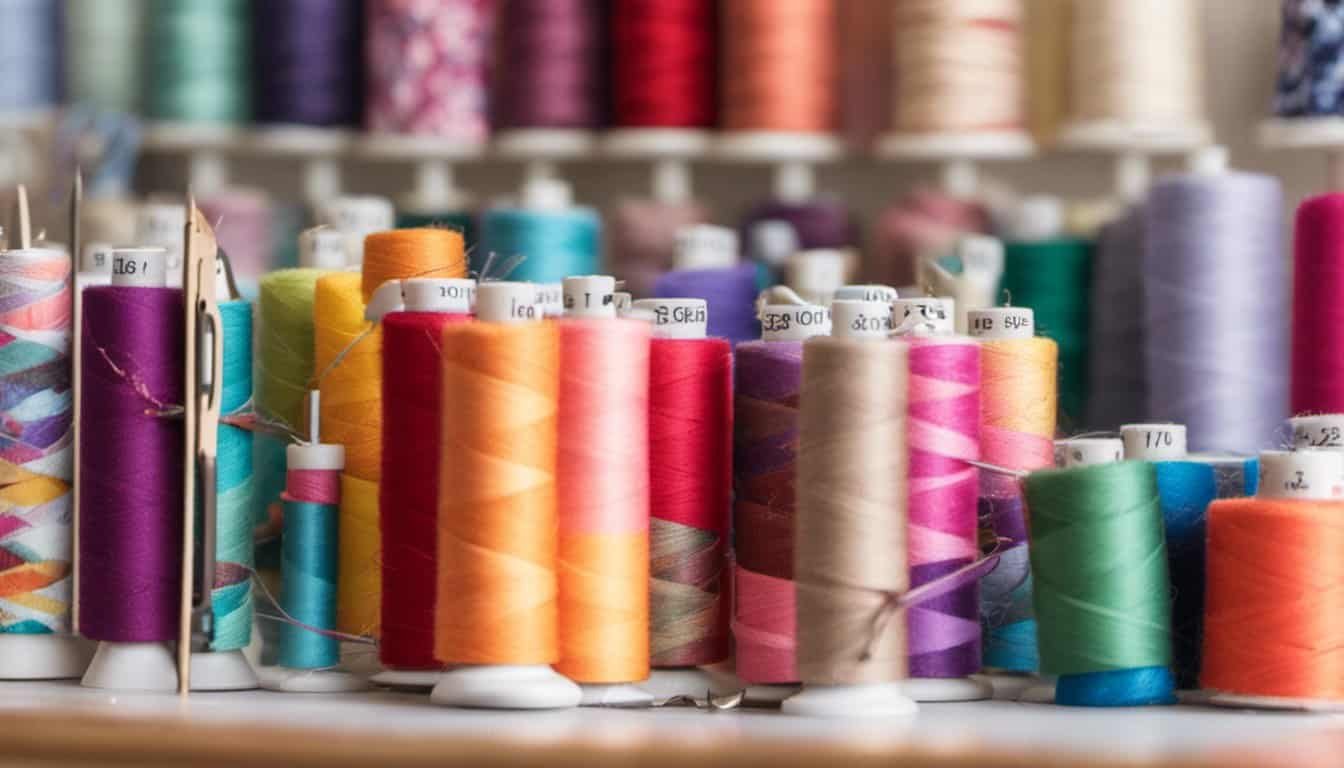Sewing a plain seam might seem straightforward, but getting it perfect every time takes a bit of practice and know-how. I’ve spent countless hours with fabric and thread, and I can tell you that mastering this basic technique can transform your sewing projects.
Whether you’re just starting out or looking to refine your skills, understanding the ins and outs of a flawless plain seam is essential. Let me walk you through the simple steps and little tips that will help you achieve smooth, strong seams consistently, making your creations look professionally crafted.
Understanding The Plain Seam
A plain seam forms the foundation of most sewing projects by joining two fabric pieces together. It consists of fabric layers, thread, and stitching, ensuring a strong and clean bond.
Key Components of a Plain Seam:
- Fabric Layers: Typically, two layers align right sides together.
- Thread: Choose a thread that matches the fabric for a seamless look.
- Stitching: Use a straight stitch with appropriate tension to prevent puckering.
Importance of a Plain Seam:
A well-executed plain seam enhances the durability and appearance of garments and other sewn items. It provides structural integrity, allowing pieces to withstand regular use and washing.
Applications of Plain Seams:
Plain seams are versatile and used in various projects, including:
- Garments: Shirts, dresses, and pants rely on plain seams for assembly.
- Home Decor: Curtains, pillows, and quilts benefit from clean plain seams.
- Accessories: Bags and soft toys use plain seams for sturdy construction.
Executing a Perfect Plain Seam:
- Accurate Alignment: Ensure fabric edges match precisely before stitching.
- Consistent Stitch Length: Maintain uniform stitch length for a neat appearance.
- Pressing the Seam: Press the seam allowance to one side to reduce bulk and set the stitches.
By mastering these elements, you can achieve flawless plain seams that elevate your sewing projects to a professional level.
Essential Tools And Materials
Having the right tools and materials makes sewing a plain seam straightforward and efficient.
Tools
- Sewing Machines: I use machines like the Brother CS6000i, which offer adjustable stitch lengths and tension settings.
- Scissors: Fabric scissors for precise cutting and smaller thread snips for trimming threads.
- Pins and Pin Cushions: Medium-length pins keep fabric layers aligned securely.
- Measuring Tapes: A 60-inch measuring tape ensures accurate measurements for seam allowances.
- Irons and Ironing Boards: Immediate pressing with a steam iron creates a crisp seam finish.
- Seam Rippers: Quickly remove unwanted stitches without damaging fabric.
- Needles: Use universal needles for general fabrics or ballpoint needles for knits.
Materials
- Fabrics: I select high-quality, pre-washed cotton or linen fabrics that align with project requirements.
- Threads: Polyester threads provide durability, while cotton threads offer a natural appearance.
- Seam Allowance Guides: Quilting rulers maintain consistent seam widths during stitching.
- Marking Tools: Water-soluble pens or chalk lightly mark seam lines without leaving permanent marks.
Preparing Your Fabric
Before sewing, preparing your fabric ensures smooth and accurate seams. I’ll guide you through cutting and marking your fabric for flawless results.
Cutting The Fabric
Accurate cutting minimizes fabric waste and guarantees precise seam alignment. Use sharp fabric scissors or a rotary cutter for clean edges. Measure twice with a measuring tape or ruler, then mark cutting lines using tailor’s chalk or fabric pens. Align fabric layers flat to maintain consistency across pieces.
Marking The Seam
Proper seam marking facilitates easy sewing and professional finishes. Apply fabric clips or pins to secure layers without distorting the fabric. Use a seam gauge to mark uniform seam allowances, typically 5/8 inch. Transfer markings clearly with tracing paper or water-soluble pens, ensuring they stay visible during stitching. Double-check all marks before sewing to prevent misalignment.
Step-By-Step Sewing Process
Setting Up Your Sewing Machine
I begin by preparing my sewing machine for the task. First, I thread the needle using high-quality thread that matches my fabric. Next, I adjust the tension settings to prevent puckering, typically setting the upper tension to medium. Then, I select a straight stitch with a length of 2.5 mm, ideal for plain seams. Finally, I place the fabric under the presser foot, ensuring it’s aligned with the seam guide to maintain accuracy.
Sewing The Seam
Aligning fabric layers is crucial for a perfect seam. I pin the fabric edges together, ensuring the right sides are facing. Then, I start sewing at one end, keeping the fabric taut but not stretched. Moving at a steady pace, I follow the seam line, allowing the machine to guide the fabric smoothly. Consistent stitch length ensures a strong bond, so I maintain a uniform speed, preventing skips or uneven stitches.
Finishing The Seam
After sewing, I raise the presser foot and remove the pins carefully to avoid fabric damage. I then trim any excess threads close to the seam edge using sharp scissors. Pressing the seam is essential; I use an iron set to the appropriate temperature for my fabric, pressing the seam allowance flat to reduce bulk and enhance durability. This final step ensures the seam lies smoothly, ready for the next phase of the project.
Common Mistakes To Avoid
- Misaligning Fabric Layers: I ensure the fabric’s right sides are perfectly aligned to prevent uneven seams and puckering.
- Inconsistent Seam Allowances: I use a seam gauge to maintain uniform seam allowances, avoiding bulk and ensuring a professional finish.
- Incorrect Stitch Length: I select the appropriate stitch length for my fabric type to achieve strong, clean stitches without visible gaps or puckering.
- Poor Pressing Techniques: I press seams accurately, reducing bulk and setting stitches to enhance durability and appearance.
- Insufficient Pinning or Clipping: I secure fabric layers with the right number of pins or clips to keep layers in place during sewing, preventing shifting and uneven stitches.
- Using the Wrong Thread or Needle: I choose thread and needles that match my fabric, ensuring smooth stitching and preventing breakage or fabric damage.
- Rushing the Sewing Process: I maintain a steady pace to ensure consistent stitch length and avoid mistakes that can compromise seam quality.
- Neglecting Seam Trimming: I trim excess seam allowances to reduce bulk and achieve a sleek, finished look in my projects.
- Ignoring Fabric Grain Alignment: I align fabric grains properly to ensure stability and prevent stretching or distortion in the finished seams.
- Skipping Test Stitches: I always perform test stitches on scrap fabric to adjust my machine settings, ensuring optimal tension and stitch quality.
Tips For Perfect Seams Every Time
Achieving flawless seams requires attention to detail and the right techniques. Here are essential tips to ensure your seams turn out perfectly every time:

- Measure Accurately
- Use a seam gauge to maintain consistent seam allowances.
- Double-check measurements before cutting to prevent errors.
- Choose the Right Thread
- Select thread that matches your fabric type and color.
- Use high-quality thread to avoid breakage and ensure durability.
- Maintain Even Stitch Length
- Set your sewing machine to a stitch length of 2.5 to 3.0 for most projects.
- Consistent stitch length prevents puckering and ensures a smooth finish.
- Adjust Thread Tension
- Test tension settings on scrap fabric before sewing.
- Proper tension reduces puckering and skipped stitches.
- Press Seams Properly
- Press seams open or to the side to reduce bulk.
- Use a hot iron and apply steam for the best results.
- Use Quality Tools
- Equip your workspace with sharp fabric scissors and reliable pins.
- Regularly maintain your sewing machine for optimal performance.
- Align Fabric Correctly
- Ensure fabric edges are perfectly aligned before sewing.
- Use fabric clips instead of pins to prevent shifting.
- Sew at a Steady Pace
- Maintain a consistent speed to ensure even stitching.
- Avoid rushing to minimize mistakes and ensure precision.
- Trim Excess Threads
- Remove any loose threads after sewing to prevent snagging.
- Use seam rippers to carefully clean up finished seams.
- Perform Test Stitches
- Sew on scrap fabric to adjust settings before working on your project.
- Testing helps identify and fix potential issues early.
By following these tips, you’ll master the art of sewing perfect seams, enhancing the quality and appearance of your projects every time.
Conclusion
Mastering the art of sewing a plain seam has been a rewarding journey for me. With patience and practice achieving perfect seams is entirely possible.
I hope you feel inspired to apply these techniques in your own projects. Happy sewing and enjoy seeing your creations come together beautifully!

















